One hundred meters from the shores of Cala Blanca, twenty meters deep, the desalination tower lies silently surrounded by wide, whitish spots over the seabed, where few seagrass tufts float. In 2010, a malfunctioning of the canalization that led inland to the plant caused the prosperous Posidonia meadows of Menorca’s west coast to be covered by a spillover of bentonite, a clay formed by the breakdown of volcanic ash. During the year that passed between its appearance and its removal through aspiration, the substance choked around 2000 square meters of secular plants.
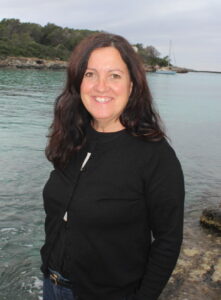
ARTEMIS | Project Partner OBSAM – Irene Estaun Clariso
“There was no contamination whatsoever, but under the bentonite posidonia couldn’t breathe. When with our first project we dived to verify the situation, in 2020, we found that the meadow was dead, although amid the few remaining areas where bentonite was still folding the sandy bottom, Posidonia was rooting and flourishing again. We want to bring back Cala Blanca’s meadow to its previous health and beauty. We want to reestablish the richness of its marine biodiversity. This is why we are so keen to be part of the ARTEMIS”, says Irene Estaún Clarisò, marine biologist of OBSAM in charge for the project’s activities in Menorca.
OBSAM, the Socio-Ambiental Observatory of Menorca, began to monitor the island’s biosphere 25 years ago. As a department of the local council, half an administration office and half a research center, OBSAM looks after the biosphere reserve and the evolution of its sustainability. Its approach is “holistic”, it deals with the environmental issues where they intertwine with governance, tourism, heritage and culture, transports and waste.
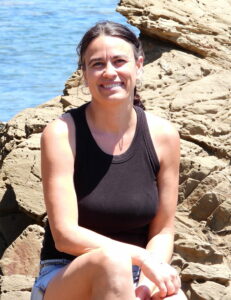
ARTEMIS | Project Partner OBSAM – Eva Marsyniach
“We joined ARTEMIS in may 2024, and we spent the first months in preparing the study of the seagrass meadow. The coring necessary for the evaluation of carbon stored in the substrate created through time by Posidonia Oceanica, called “matte”, was conducted in November by CEAB (Centro de Studios avanzados de Blanes). The biodiversity analyses, instead, (EBQI- Ecosystem-based Quality Index) have been completed in March 2025”, explains Eva Marsinyach, OBSAM’s expert in marine monitoring. The sampling was completed by the researchers Oscar Serrano and Nicole Foster, and took place both in the pilot site and in the “control area” surrounding it. The samples are now being analyzed in a Barcelona laboratory. “We are waiting for the results, but we can already say that in ten years we’ve lost a lot of sediment. The impact of the bentonite spillover is very clear. In some of the samplings, at 25 centimeters depth, we found a black stratum that could well be bentonite”, adds Eva Marsyniach.
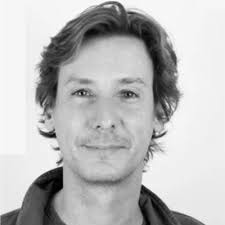
ARTEMIS | Project Partner – Menorca PreservationMarcial Bardolet
The OBSAM team will use its long experience in socio-environmental issues also in conducting all the meetings with the local stakeholders, a fundamental passage for the elaboration of the governance sustainable strategy that in ARTEMIS goes along with scientific analyses, planting of the degraded areas and monitoring. The main interlocutor in the this first stage of the project has been the Department of the Environment of the Balearic Islands Government, and in particular Marcial Bardolet, head of the Posidonia Seagrass Surveillance Service at the Institut Balear de la Natura (IBANAT). In Menorca, as in all the Baleari Islands, Posidonia Oceanica finds itself at the center of marine monitoring, it is part of the community’s conscience: “In the Baleari archipelago pine trees cover around 800 square kilometers. Posidonia, 630. It’s a huge submarine forest, not a small plant in a bay. Even taxi drivers know and talk about Posidonia”, Bardolet underlines.
Such a vast and appreciated presence requires special care in a space marked by the structural and increasing presence of tourism. Backed by a severe set of regulations, the Surveillance Service provides constant monitoring against illegal anchoring (18 boats are involved), an eco-mooring system and a sophisticated cartography activity, always up to date. The importance of posidonia forests in transforming carbon dioxide into oxygen and their fundamental role as nursery for hundreds of marine species, some among the various ecosystem services they provide, is spread among the new generations through numerous educational programs in the schools. At least 40 are the scuba divers volunteers the help monitoring the condition of Posidonia around the islands. “We don’t have rivers here. All the sand of our beaches is organic, it comes from Posidonia. No posidonia no sand, no sand no tourism, no tourism no economy. We love the sea, and we want to preserve all its endless beauties, and let tourists know about it”, says Bardolet. Within the ARTEMIS project the Department of the Environment grants all the needed authorizations. “We have a long history of collaboration with OBSAM, and I’m constantly in contact with Irene and Eva. We’ll not only accompany the team through the analysis and reforestation stages, but also try to get the credits, the compensation, and to see if we can link the compensation of biodiversity or carbon into the project”.
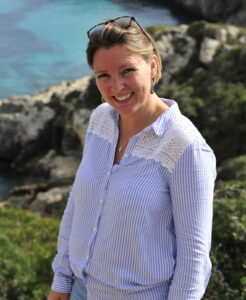
ARTEMIS Project partner | Menorca Preservation -Rebecca Morris
Another close collaboration allowed the first contact between the OBSAM team and the bentonite-covered seabed of Cala Blanca. “One of the projects that we funded a few years ago was an action aimed at identifying negative environmental impacts that there were around the island of Menorca, and that could potentially be addressed. The idea was to do a sort of mapping exercise of these impacts, and try and then develop projects to solve them. The restoration of the area surrounding the desalinator of Cala Blanca comes from this experience”, recounts Rebecca Morris, director of Menorca Preservation.
Menorca Preservation is a non-profit foundation which since 2017 raises money to support environmental initiatives on the island, both implemented by third parties or by the foundation itself. The “pillars” of its activities are four: plastic, energy, land and sea. From helping Menorca to become plastic-free to sustainable agriculture, from marine monitoring to supporting the transition to renewable energies. “Once the reforestation of Cala Blanca has been completed, we’ll have to follow the delicate process of rooting, the slow growth of the meadow. We’ll be funding this side of the work. The other side of our participation to ARTEMIS is communication, giving it visibility not just in Menorca but at a more global scale. We are part of a group called Conservation Collective, a network of international associations and institutions that learn from each other and replicate projects when they are successful”, explains Rebecca Morris. The short distance existing between the global and local seems to be the key. Morris concludes:
“Grassroots community-led initiatives are what can really make a difference in small places like Menorca. Especially where we have strong effects from climate change. I think that this kind of actions, where you’re able to really identify an area that needs addressing, is the best way to proceed towards a sustainable relation between the community and the natural environment. People often think that their impact is not significant enough. We have always been battling against this kind of pessimistic approach. When the community is involved, projects are solid, really sustainable, and long-lasting”.
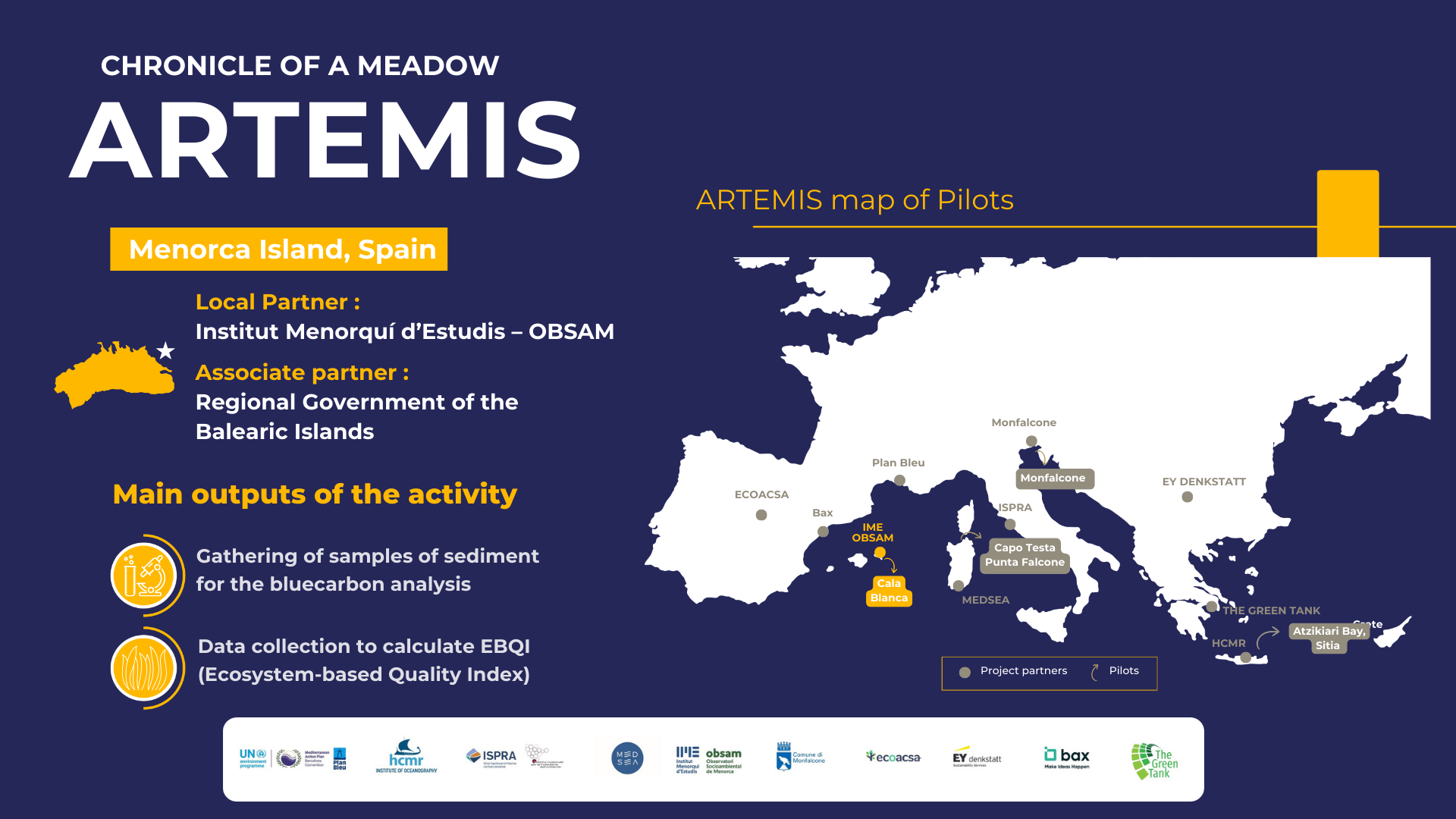
ARTEMIS | Cala Blanca, Spanish pilot Site – Menorca

